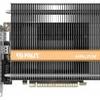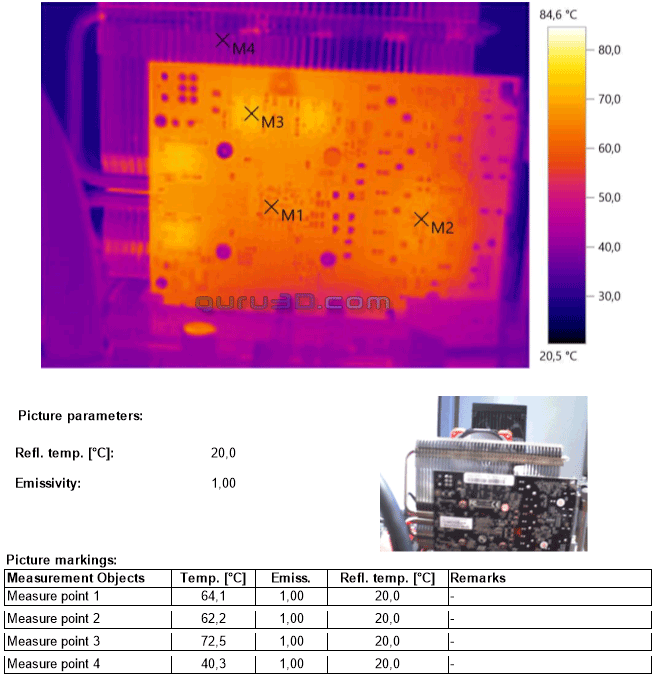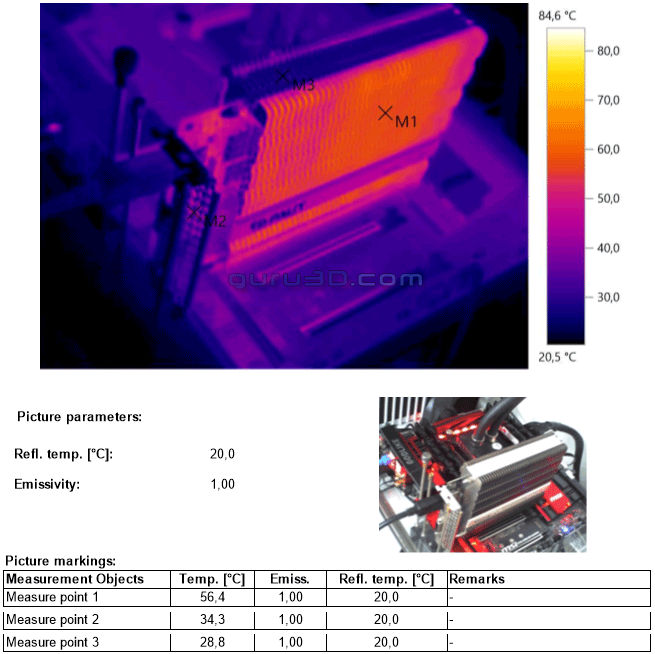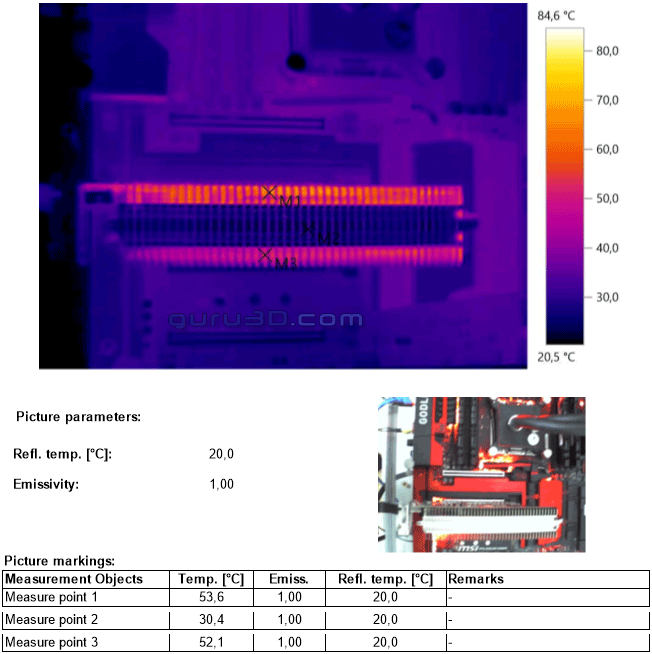Graphics Card Thermal Imaging Measurements (FLIR)
Thermal Imaging Temperature Measurements
A new addition to our reviews will be the inclusion of Forward Looking Infra Red thermal images of hardware. Over the past years we have been trying to figure out what the best possible way is to measure temperatures on hardware. Multiple options are available but the best thing to do is to visualize heat coming from the product or component being tested. The downside of thermal imaging hardware is simple, FLIR cameras with a bit of decent resolution costs up-to 10,000 EUR. Hence we passed on it for a long time. With a thermal imaging camera a special lens focuses the infrared light emitted by all of the objects in view. This focused light is scanned by a phased array of infrared-detector elements. The detector elements create a very detailed temperature pattern called a thermogram. It only takes about one-thirtieth of a second for the detector array to obtain the temperature information to make the thermogram. This information is obtained from several thousand points in the field of view of the detector array. The thermogram created by the detector elements is translated into electric impulses. The impulses are sent to a signal-processing unit, a circuit board with a dedicated chip that translates the information from the elements into data for the display. The signal-processing unit sends the information to the display, where it appears as various colors depending on the intensity of the infrared emission. The combination of all the impulses from all of the elements creates the image. We can seek hotspots on the PCB indicating, for example, GPU but also VRM temperature as well as how heat is distributed throughout a product. We do hope you will enjoy this new technology as it did cost us an arm and a leg to be able to implement it.
Above: GeForce GTX 1050 Ti (4GB)
We can measure pretty accurate temperatures at the GPUs and VRM areas. We can measure thermals down to a 10th of a degree, our thermal camera is calibrated. The graphics card is 100% stressed in this stage at a FireStrike scene 1 loop for at least 15 minutes run-time. The majority of heat (if you can call it that) is exhausted. At M1 the GPU, at M2 the VRM area and M3 and M4 are the memory. You are looking at mid-seventies range temps, not bad for a passively cooled card under this stress level really.
However we also tested with one fan activated at 500 RPM at 35cm distance. This to emulate airflow inside a chassis. As you can see, even a tiny breeze of air can impact the card big-time in overall temperatures. Here again the card was looped in 3DMark FireStrike scene 1.
When we position the thermal camera outwards we can see that the passive cooler certainly works.
The heat is obviously exhausted inside you PC due to the nature of passive cooling, nothing to worry about as it isn't that much but you will require some sort of airflow established inside your PC.





